Photos: European Art: 6 Famous Paintings That Hold Hidden Messages
(005875.811-:E-000062.43:N-AC:R-SU:C-30:V)
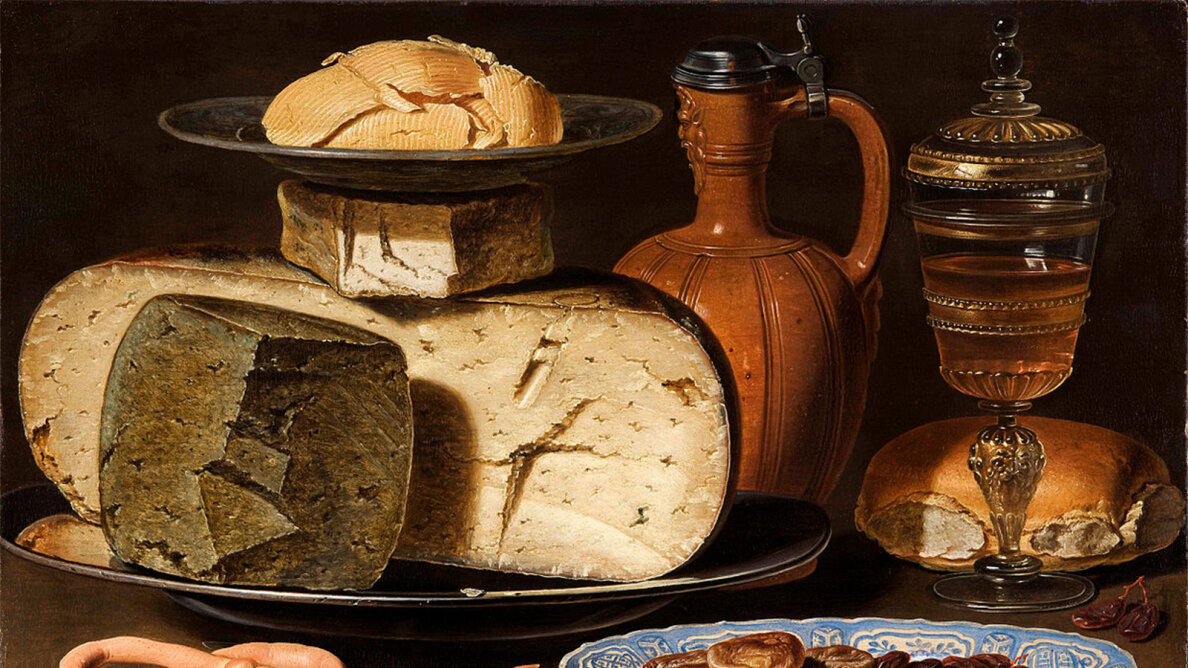
"Still Life with Cheeses, Almonds and Pretzels," by Clara Peeters contains a self-portrait that only the most astute observer would notice. WIKIMEDIA COMMONS
Allowing your legacy to live on through an epic work of art is one thing; leaving behind a sneaky hidden wink to your audience through said artwork definitely kicks that legend up a notch. Great painters like Leonardo da Vinci, for example, loved to bury symbolism in iconic pieces like "The Last Supper," which includes details that are open to interpretation and have sparked debate among scholars for years. Here are six other works of art that have hidden messages you may have missed.
1. Clara Peeters’ "Still Life with Cheeses, Almonds and Pretzels" (c. 1615)
"One of my favorite images smuggled into a painting can be found in a still life by Clara Peeters in the Mauritshuis in The Hague, "Still Life with Cheeses, Almonds and Pretzels," says Ross King, author of several books on Italian, French and Canadian art and history, including "Leonardo and The Last Supper," "Brunelleschi’s Dome" and "Michelangelo and the Pope’s Ceiling."
"Painted in the early 1600s, it’s an incredibly lifelike depiction of a delicious lunchtime snack. But if you look very closely, you can see that Peeters has included herself in the painting: She’s the tiny figure whose head we see reflected in the pewter lid of the jug in the centre of the painting. On the one hand, it’s a very modest gesture. On the other, it shows her astonishing skill in painting in miniature."
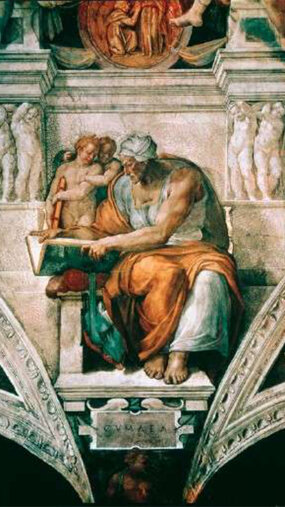
The ceiling of the Sistine Chapel contains all kinds of hidden Michelangelo messages.
WIKIMEDIA COMMONS
2. Michelangelo’s Frescoes on the Vault of the Sistine Chapel (1508-1512)
"Michelangelo depicted a series of sibyls and Old Testament prophets, all of them seated on thrones and accompanied by cherub-like creatures," says King.
"One of the two cherubs looking over the beefy shoulder of the Cumaean Sibyl makes an obscene hand gesture, sticking his thumb between his index and middle finger. This gesture dates back to the ancient Romans — what the Italians today call mano in fico, or fig hand. It’s the equivalent of giving someone the finger. It wouldn’t have been possible for people on the floor of the chapel to see the fingers, but Michelangelo may have found it amusing that he had managed to sneak this rude gesture into his masterpiece."
Also hidden in the frescoes on the Sistine ceiling are Michelangelo’s very detailed anatomical illustrations, all concealed inside the figure of the body of God. Michelangelo destroyed the majority of his anatomical drawings, but cleverly concealed from the eyes of Pope Julius II and countless worshipers, historians and art lovers for centuries are the anatomical drawings in the Sistine ceiling.
3. Sandro Botticelli’s "The Birth of Venus" (1486)
You might have to have a serious background in botany to fully appreciate the details in Sandro Botticelli’s work, which has been deemed the "first large-scale canvas created in Renaissance Florence." Experts say the painting contains at least 500 individual plants that can be classified as over 200 different species, and some believe all of these species thrived around Florence during the spring season in the 15th century.
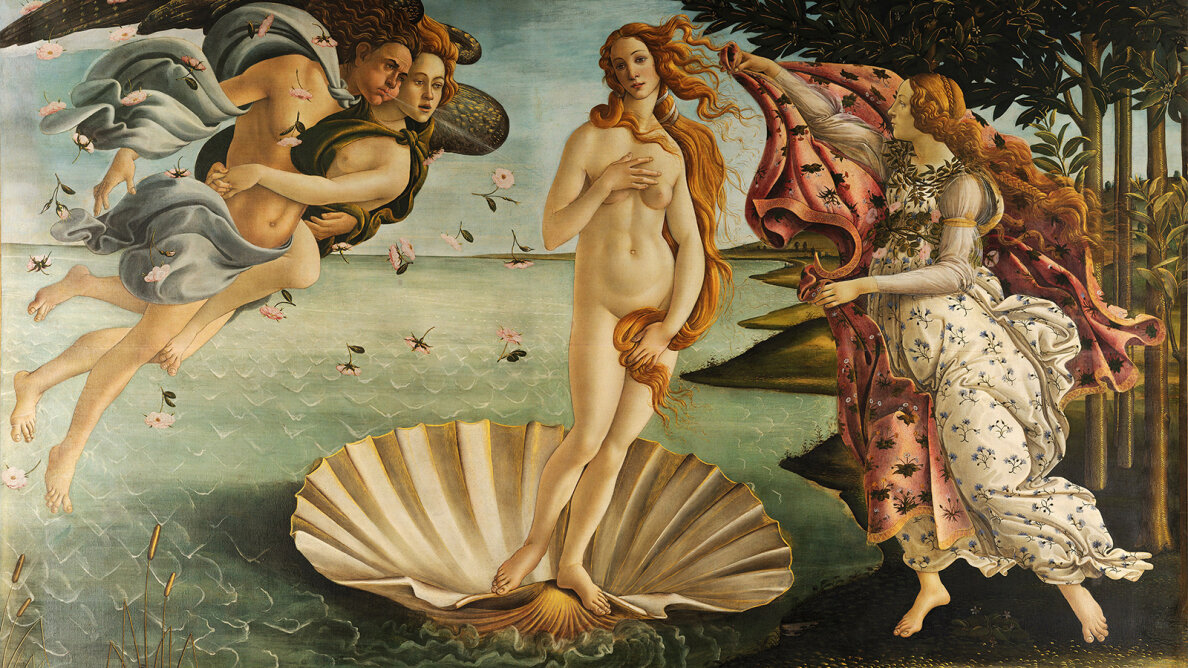
Botticelli’s "The Birth of Venus" is a botanist’s dream.
WIKIMEDIA COMMONS
4. Leonardo da Vinci’s "Mona Lisa" (1503)
Not all art scholars will agree, but according to Italian researcher Silvano Vinceti, Leonardo da Vinci’s famous female portrait star has a few secrets in her mysterious eyes.
As the president of Italy’s National Committee for Cultural Heritage, Vinceti and his team studied high resolution images of the painting and reported that they theorized the painting is full of cryptic messages, including letters and numbers in the subject’s eyes that are too tiny to see on the aged original work.
They claim Mona Lisa’s right eye contains the letters LV, which they assume is da Vinci‘s way of staking claim over the image.
5. Vincent van Gogh’s "Café Terrace at Night" (1888)
Back to "The Last Supper" for a second: Aside from da Vinci’s famous representation, some believe Vincent van Gogh also took a stab at artistically representing the biblical scene in his 19th century painting "Café Terrace at Night," although the references are subtle.
According to Van Gogh expert Jared Baxter, eagle-eyed viewers can spy a long-haired central figure in the background who is surrounded by 12 individuals. Not convinced? How about the fact that one of those figures seems to be slipping in the shadows like the notorious Judas?
If you’re still not so sure, see if you can find all the tiny crucifixes scattered throughout the scene, including one hovering above the Jesus-like figure.
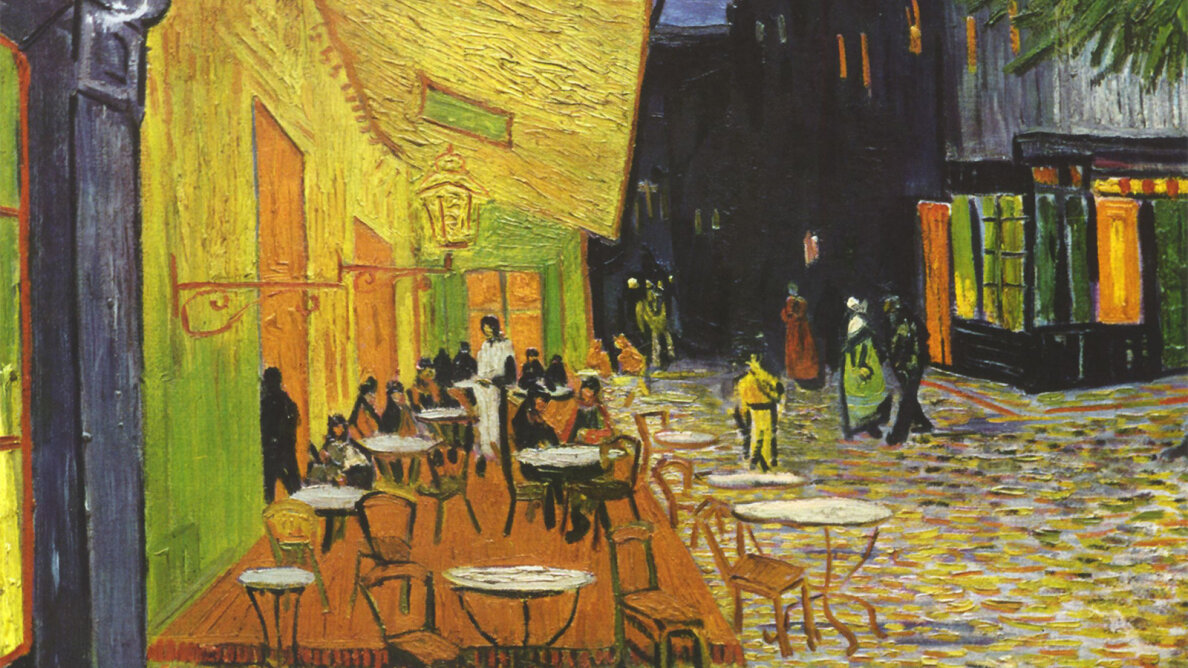
Vincent van Gogh placed his version of the Last Supper on the terrace of the café, at night, in Arles, France.
WIKIMEDIA COMMONS
6. Jan van Eyck’s "The Arnolfini Portrait" (1434)
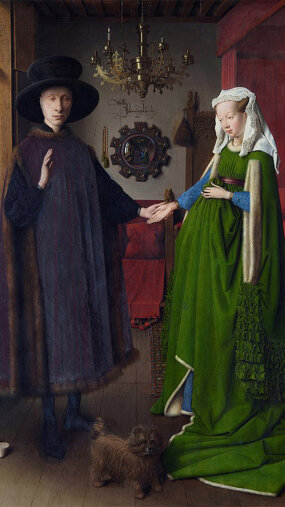
Van Eyck’s secrets are reflected in the mirror.
WIKIMEDIA COMMONS
While the main subjects of Jan van Eyck’s painting are thought to be the wealthy merchant Giovanni di Nicolao Arnolfini and his wife, Costanza Trenta, they’re not the only people in the picture.
If you take a closer look at the mirror in the center of the room, there are two more people entering the room.
Many believe one of them is supposed to be van Eyck himself, and you’ll see the artist give himself another shout-out with a Latin inscription on the wall above the mirror, translating to, "Jan van Eyck was here. 1434."
An interesting interpretation is found in the fact that Giovanni’s wife had died in 1433, which presents these possible hypotheses: Either van Eyck had begun the work in 1433 while his patron’s wife was alive and she had died by the time he finished it, or it could simply have been a posthumous portrait. Notice the male figure’s very loose grasp on the woman’s hand, possibly to symbolize her slipping away. And the candles in the ornate chandelier – on the man’s side the candles are still tall and lit, while the candles on the woman’s side are burned out, signifying that the man is still alive while her life has ended.
Video & Audio: Loving Life: Jans personal discussions with President PW Botha
In 2006 as a result of my book, Government by Deception and my website AfricanCrisis, I made contact with former President PW Botha. He was very nice to me and he began phoning me. I published articles of things he told me about. He was so impressed with my accuracy when I wrote on my website what he told me, that he later invited me to stay at his house for 5 days. In this interview, I discuss some of the things that PW Botha and I discussed, and what he told me.
Video & Photos: DREADFUL: Rapper Kills 2 White Women LIVE on Instagram!
This is so terrible. Terrible. In many respects the White women and girls need to be saved from themselves.
Video & Audio: Rhodesia to Zimbabwe: Do Blacks cause massive climate damage?
Why are there so many droughts in Zimbabwe, almost for 15 years running and now these are impacting South Africas weather patterns like never before.

